It’s a cool and crisp Friday afternoon in February as Toni Basso and Erin McLaughlin wait in line outside of an unassuming West Loop warehouse building at 1130 W. Monroe St. Many more join the queue as noon approaches, chatting amongst themselves and fidgeting with their phones. An uninformed passerby might wonder why these people are standing outside the plain-looking brick building. The only clues to what await inside are a lower-cased title, “wndr museum,” and quotes from famed artists like Andy Warhol: “Everything has its beauty but not everyone sees it.”
Eventually the clock strikes 12 p.m., the crowd stirs as the doors are opened and a museum ambassador cheerfully announces, “Welcome to wndr, come on in,” welcoming guests to one of Chicago’s newest attractions, the interactive “pop-up” wndr museum.
As guests inch closer to the entrance, the sharp contrast between the bland exterior and the museum’s colorful interior becomes clearer. Even before the first glimpse, guests are beckoned forward by upbeat instrumental guitar music playing over the speakers and ambassadors happily shouting welcome instructions. Make it to the front door and the world outside disappears under the excess of visual stimuli and activity housed within the museum — a large neon “wndr” sign stands prominently over a bed of flowers in front of the blue and white streamer-lined queue, art installations both rise up from the ground and hang from ceilings overhead and every color in the rainbow is featured in excess.
“I cannot wait to explore,” Basso says to McLaughlin.
This sentiment is not unique to Basso, as it was the desired reaction designed by the creators of wndr — pronounced “wonder” — museum, Chicago’s newest large-scale artistic venture. Evidently, guests have been pleased with what they have found.
After opening its doors on September 21, 2018, word of wndr spread quickly with over 150,000 guests flocking to visit the museum — and after exceeding initial expectations through their first five months, wndr has transitioned from pop-up museum to a permanent cultural fixture.
“We had this idea, saw this space and just thought it would be cool to really create something fun for Chicago,” says wndr Social Media and Digital Marketing Manager Joanie Faletto, who has been with the museum since July.
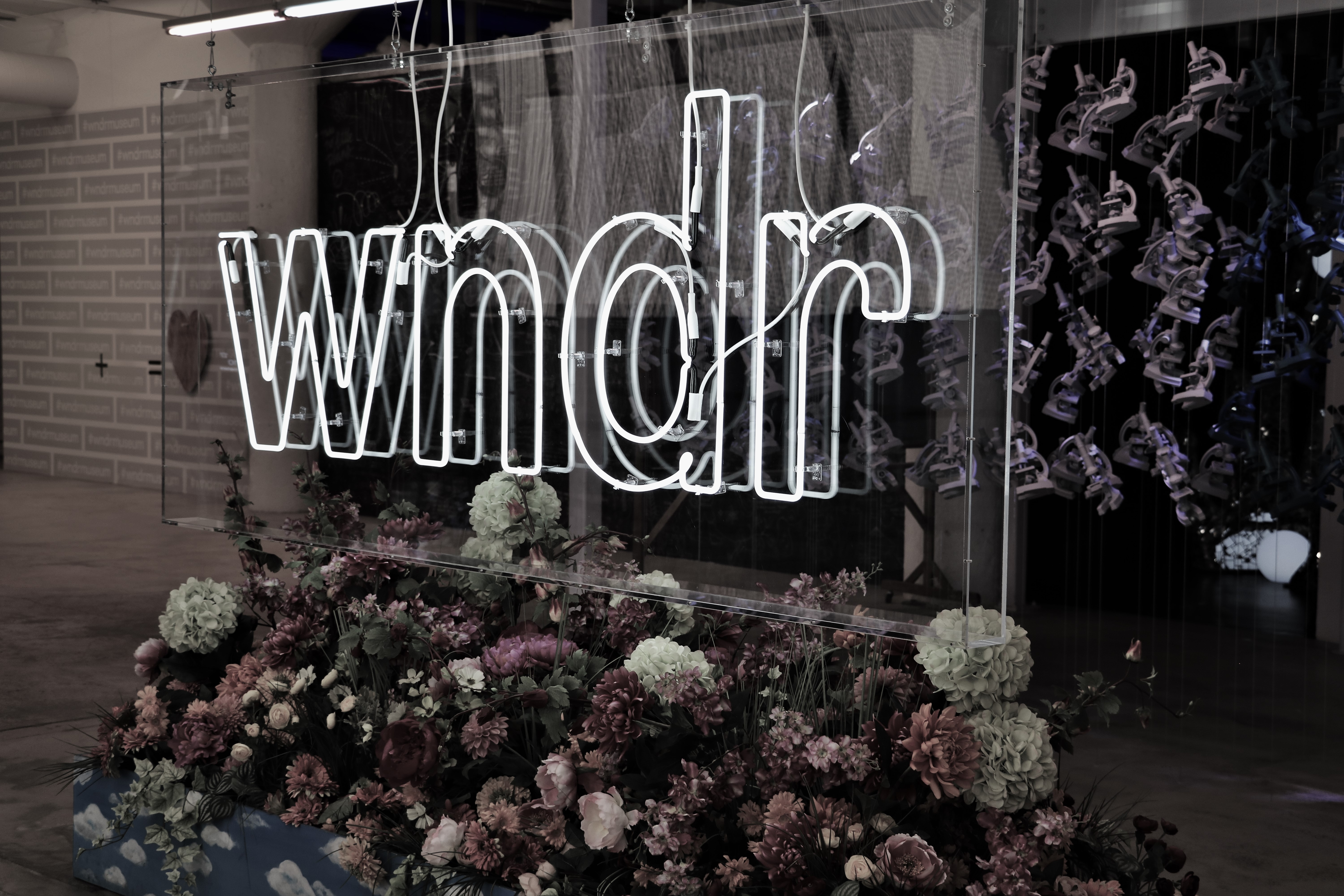
Photo: Gabriele Litkauskaite, 14 East.
Brad Keywell, co-founder of Groupon and CEO of Uptake, serves as the executive creative director and primary funder for the museum and the idea for wndr was dreamt up with co-creator Dr. Irwin Adam Eydelnant, who also previously contributed to New York City’s comparable Museum of Ice Cream in 2016.
Noticing the success of the pop-up craze in other major markets, wndr started as an experiment.
“New York gets a lot of this kind of stuff and L.A.,” says Faletto, so the wndr creative team initially set out to create a temporary pop-up experience unique to Chicago.
However, despite claiming the title of “first ever pop-up museum to originate in Chicago,” wndr is not the first of its kind to appear in the city. Refinery29’s “29 Rooms”— which originated in New York City — and Los Angeles’ “Happy Place” both had brief runs in Chicago, staying true to the pop-up moniker. Each remained in the city for a predetermined run, attracting guests with a short-term “burning platform” approach before moving on to another market. The wndr museum credits its success and its ability to lay roots, partially, to its Chicago origins.
Distinguishing itself from many prominent Chicago attractions that can be found closer to the heart of downtown, wndr deliberately set up shop in the West Loop.
“We love being in the West Loop because we see it as kind of a tie between the South and West sides,” says Faletto. “The neighborhood has been really responsive to it.”
So responsive that the museum — which is open Wednesday through Sunday — brings in over 1,000 Chicagoans and out-of-towners alike on their busiest days, Saturday and Sunday.
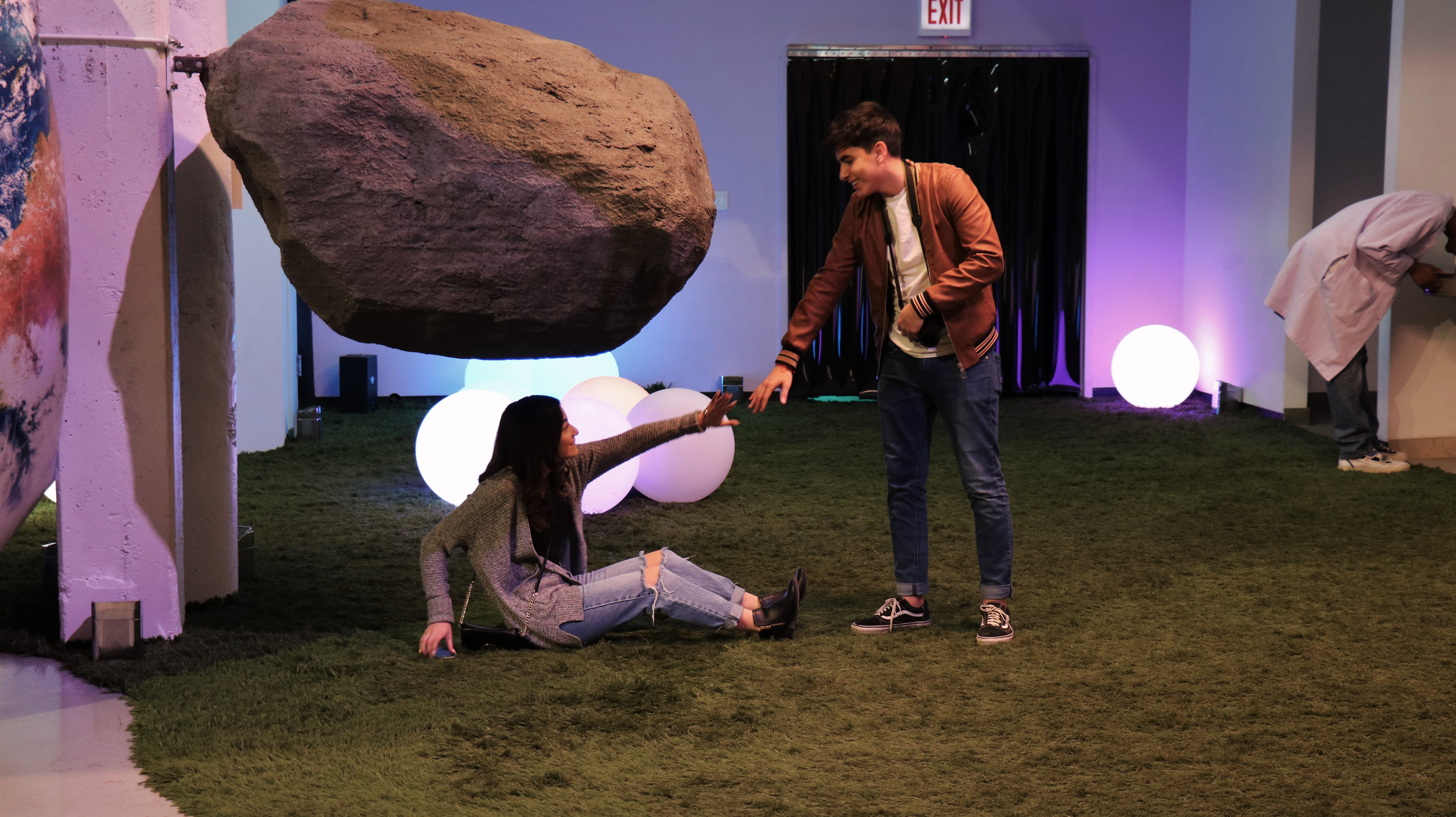
Photo: Michael Abraham, 14 East.
However, the real differentiator between wndr and more traditional Chicago artistic attractions is the experience and the way in which guests can interact with the exhibits. The museum has maintained high enough traffic to establish itself within Chicago by offering a modern twist on the traditional museum model. Whereas most museums place rigid standards on guests — no flash photography, no touching, stand behind the velvet ropes — wndr encourages guests to engage and interact with the exhibits. The result is an experiential fun-house of sorts that transports the visitors inside the art and allows them to take part in the creation process themselves.
Part of the museum’s success can perhaps be attributed to the unique sense of curiosity that it creates for its guests, often blending both art and science. Guest Giovanna Mazzeri describes the effect as “provocative and fun,” and provided validation for the apt naming, “it really is a wonder.”
Like most museums and artistic attractions there is a strong visual component, but wndr takes it a step further by committing to other senses as well.
“We like to say that the sixth sense is wonder,” says Faletto.
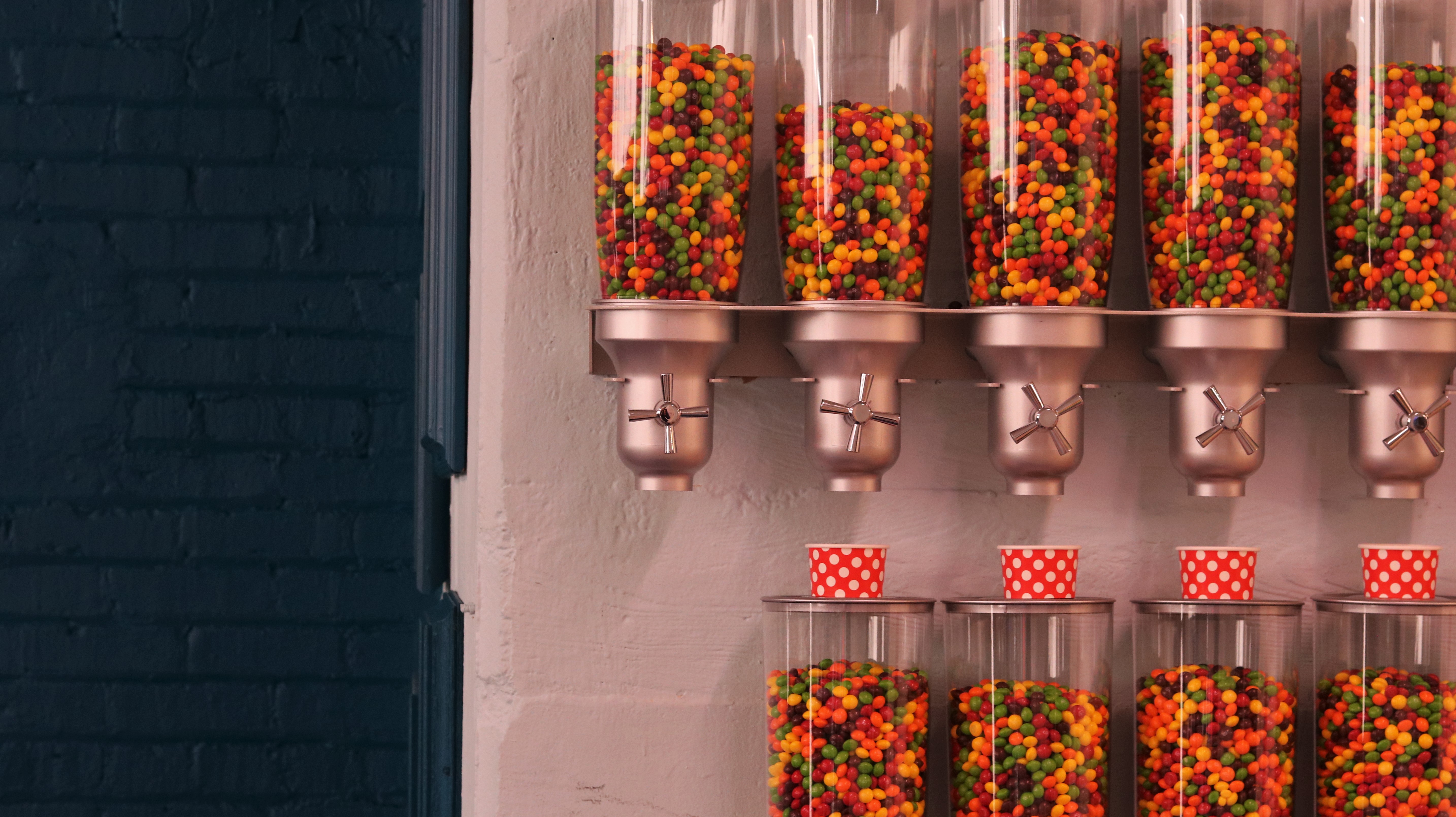
Wall of Skittles at wndr. Photo: Gabriele Litkauskaite, 14 East.
While the colorful wall of Skittles is beautiful to look at, sweet-toothed guests are also encouraged to fill up their own colorful cups to enjoy a taste as they travel throughout the exhibits. Notice a sweet smell? Various rooms include scent machines to accompany the look and feel of, for example, zero gravity. Further, guests eventually come to notice that the music that invited them into the main lobby has also shifted to match the feel of different rooms — from live acoustic guitarists to dance music. The museum creates a sensory experience that places guests into the art as opposed to being detached observers.
“It’s not your typical museum, it’s not the typical spelling of wonder. The unexpected is something that we like to have around every corner.”
wndr accomplishes this atypicality by structuring the exhibits into a linear path of sorts, “kind of like a haunted house,” says Faletto. The exhibits — or “experiences” as wndr refers to them — can stand alone while also fitting into a larger rotating narrative.
The broader theme for wndr’s first chapter, which ran through the end of March, was “FINITE/INFINITE”— which took guests down a path starting at the microscopic level and ending with infinity. Consistent with the theme of combining art and science, the chapter began with “The Hall of Microscopes,” where blue sculpted microscopes dangled from the ceiling in repetition, accompanying real microscopes where guests can view some of the smallest particles known to humankind. Expanding upon this idea, guests are ushered into the next room which — as wndr ambassador Jessica describes — “simulates the subatomic environment of neutrinos.” Each room similarly continues to grow in scope, eventually reaching the zero-gravity atmosphere room and finally, infinity.
Further contributing to the success of the burgeoning attraction, wndr combines a compelling mix of installations from famed contemporary artists such as Yayoi Kusama, Barbara Kruger and Richard Prince, as well as local Chicago artists. It should be seen as no coincidence that the final experience along the “Finite to Infinite” chapter also serves as the main attraction. The most popular work that wndr possesses is Kusama’s infinity mirror room entitled “Let’s Survive Forever.”
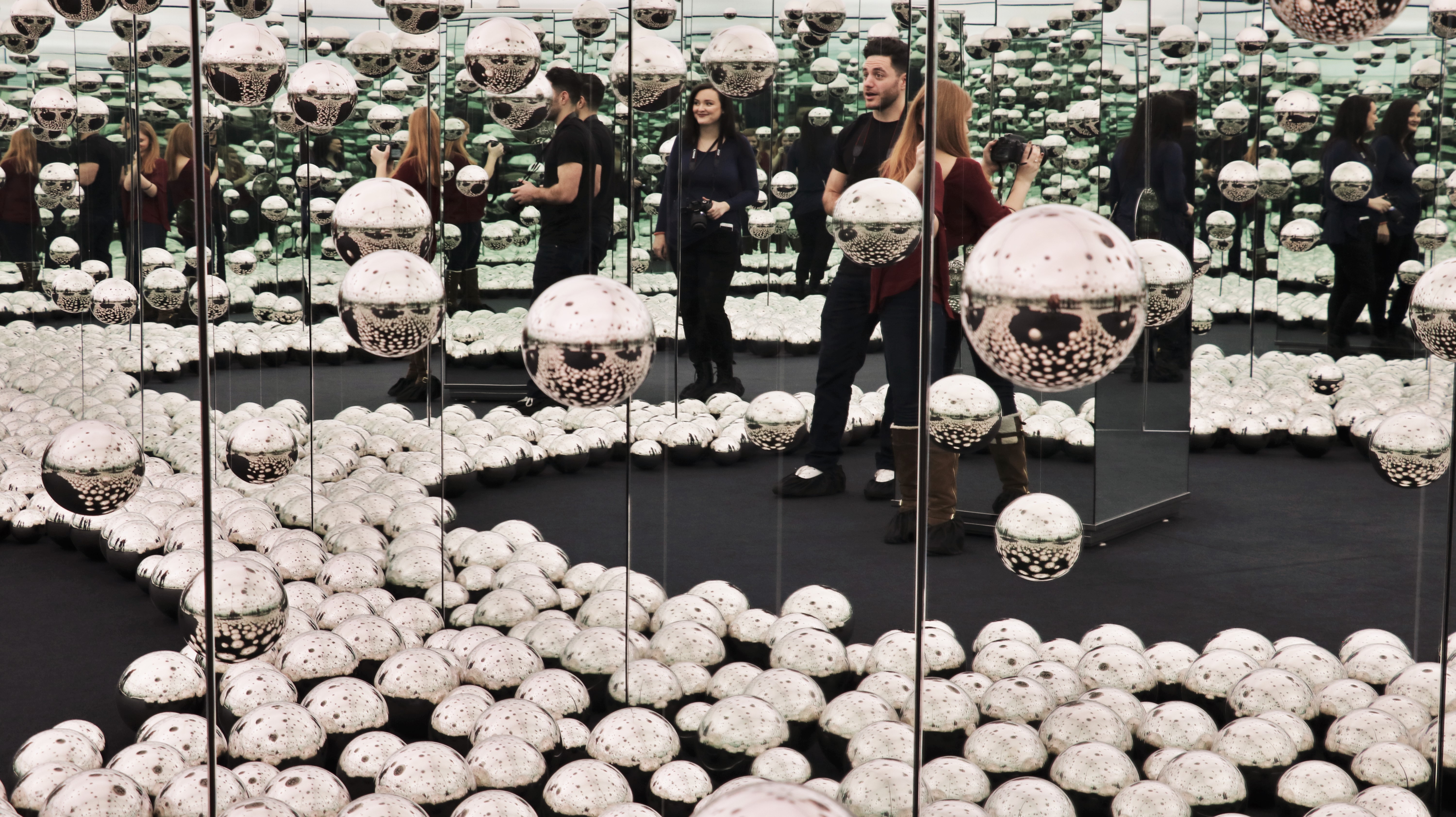
Inside the infinity mirror room, one of the most well-known and popular exhibits of wndr. The installation was created by Yayoi Kusama, a Japanese artist, who is featured all around the world. Photo: Gabriele Litkauskaite, 14 East.
Kusama, whose career has spanned over 50 years and whose works are featured on all inhabited continents, is cited by BBC as the “biggest-selling female artist in the world.” Featuring Kusama’s work adds to wndr’s legitimacy from the high art community, which can help bring in guests from all over the world.
“Let’s Survive Forever” was acquired on loan from a private collector and its previous feature location was the David Zwirner Gallery in New York, where guests often waited up to five hours to experience infinity for 20 seconds in groups of 12. Adding to wndr’s appeal, guests are able to experience the room for three times as long in groups of six.
“It’s an important piece to have in Chicago,” says Faletto. “It’s world famous.”
The intimacy with which guests can experience Kusama’s work is often cited by guests as a favorite part of the experience. One guest, Lexi Gross, sums up many visitors’ opinions.
“The infinity room was my favorite exhibit, by far. It is different and much funner than anything else I have seen at a museum.”
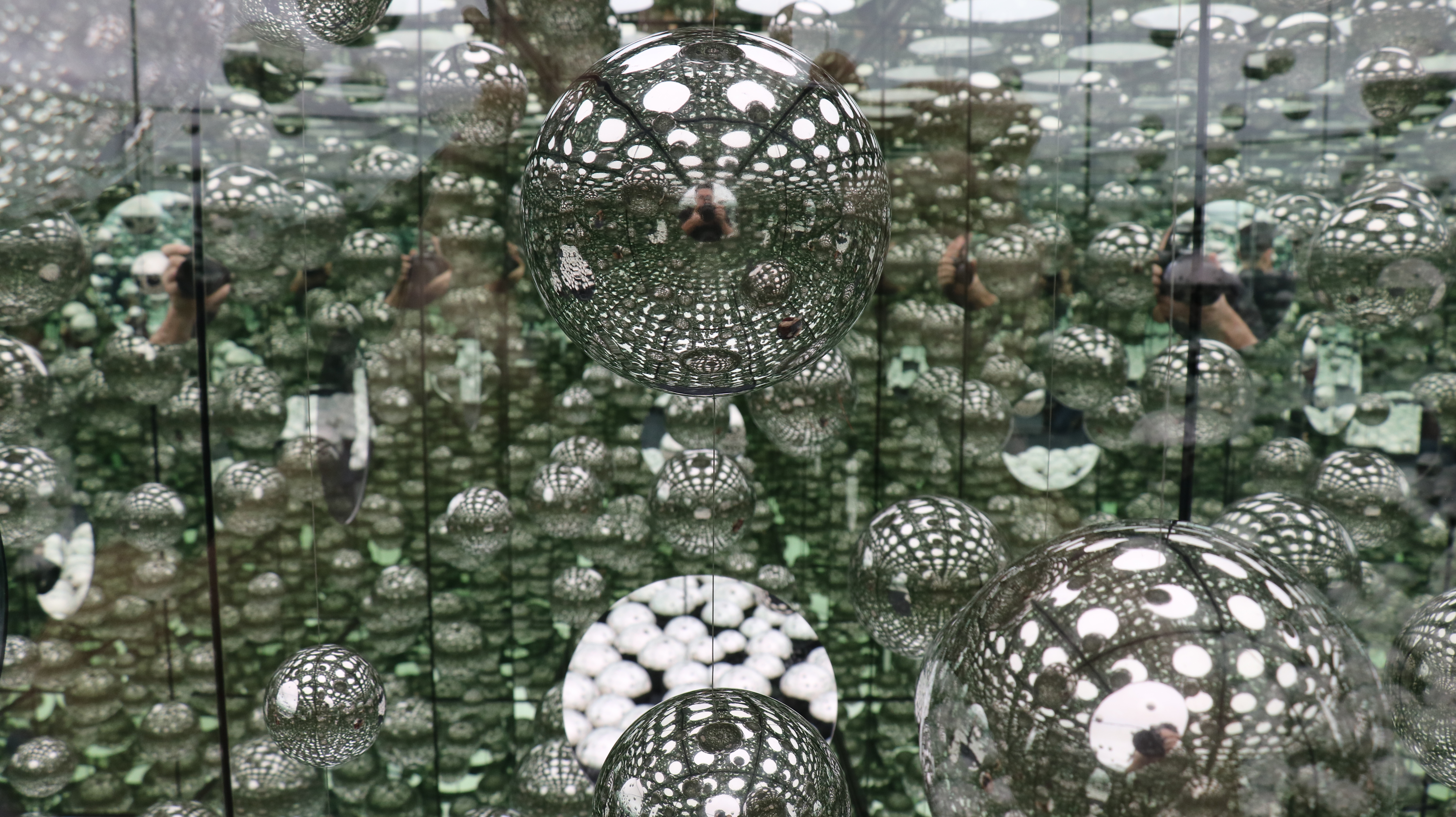
Yayoi Kusama’s Infinity Room at wndr. Photo: Michael Abraham, 14 East.
The most popular works from the aforementioned, well established artists will remain as permanent fixtures in the chapters to come. The rotating, chapter-based structure aims to keep the museum fresh, feature new local artists and encourage past visitors to come back for more. The next chapter, which just opened after a brief closure in April, is “TANGIBLE/INTANGIBLE” — where visitors become the artists and contribute to 40 revamped art installations in the space.
With more chapters also comes more exposure for local Chicago artists.
“Being a part of the cultural and creative scene of Chicago is really important to us,” says Faletto.
The museum includes an “artists in residence” program that features new artists every day. These local artists paint live as if it were their own studio, with circulating guests getting to witness the process and enjoy new original creations.
Some of the more prominent Chicagoans featured at wndr are local muralist Tanner Woodford, painter Kate Lewis and designer Shawn Smith. Woodford — who is a faculty member of the School of the Art Institute of Chicago and the founder of the Design Museum of Chicago — has been featured across the country. Lewis’ style, which she partly describes as “toying with strange points of perspective, and making conscious use of negative space,” makes her a perfect fit for the perspective-shifting nature of the museum. Smith’s quirky emotive style also fits perfectly with the overall brand of the photo-friendly museum.
In addition to this program, wndr staffs local poets that engage with guests and provide souvenirs, further rounding out the experience beyond just the visual. During their experience, any interested guest can give these poets a topic of their choice to write about. At the end of their tour, each visitor can take home the original typewritten poem that was created for them. wndr claims that features like this help set them apart from other interactive museums.
All of this accessibility and encouraged interaction might make one curious how this new museum is able to monitor or maintain all of their exhibits. wndr employs over 80 total museum guides whom they refer to as ambassadors, many of whom are aspiring artists themselves.There are roughly 30 ambassadors throughout the museum at any given time, helping to explain the features of each installation, facilitating engagement with the exhibits and ensuring the execution of wndr’s vision.
Tourists like Basso and McLaughlin have claimed the wndr museum as a must-see, and many others see the museum in the same light. Despite the early success of the now permanent pop-up and the collection of works from well-established contemporary artists, wndr has its detractors. So far, online reviews have been mixed. Its Yelp profile, with just over 100 polarizing reviews, commands a 2.5 rating (out of 5), while over 350 Google reviews combine to a rating of 4 (out of 5).
Critics of wndr cite unclear organization, overcrowding and an excessive price, which at $32 per ticket (plus an additional $2 service fee and $3.84 amusement tax), is more than double the general admission price for both the Museum of Modern Art in New York and the Art Institute of Chicago.
The most common critique, however, describes wndr as simply social media bait.
One Yelp Elite reviewer Taylor A. describes it as “a glorified Instagram photo shoot.”
Jonathan Lieb, a wndr ambassador, even went so far as to describe their panoramic exhibit as “panorama for narcissists.”
Similar pop-up experiences have also provoked the ire of art traditionalists. These critics accuse pop-ups of leveraging the vanity sometimes associated with Instagram culture. The New York Times described the pop-up experience as an “existential void,” and Vox referred to these museums as “Instagram traps.” Whether you are a heavy social media user or not, it doesn’t take long for guests to realize the prevalence of photography within the walls of wndr museum.
While the directorial board of wndr encourages photography and recognizes that the strong visual elements of the museum make it popular in the social media context, they stress that overall engagement is key.
“A lot of people come here for the good photos,” says Faletto. “I don’t think any of the exhibits are necessarily photo first. The interactivity is always number one for us so with all of the exhibits there’s something to do, there’s something to interact with and engage with because we think getting curious and exploring your sense of wonder happens when you’re actually in it and doing something and not just documenting it. And obviously you get beautiful pictures at the same time so everyone wins.”
Header photo by Gabriele Litkauskaite, 14 East.


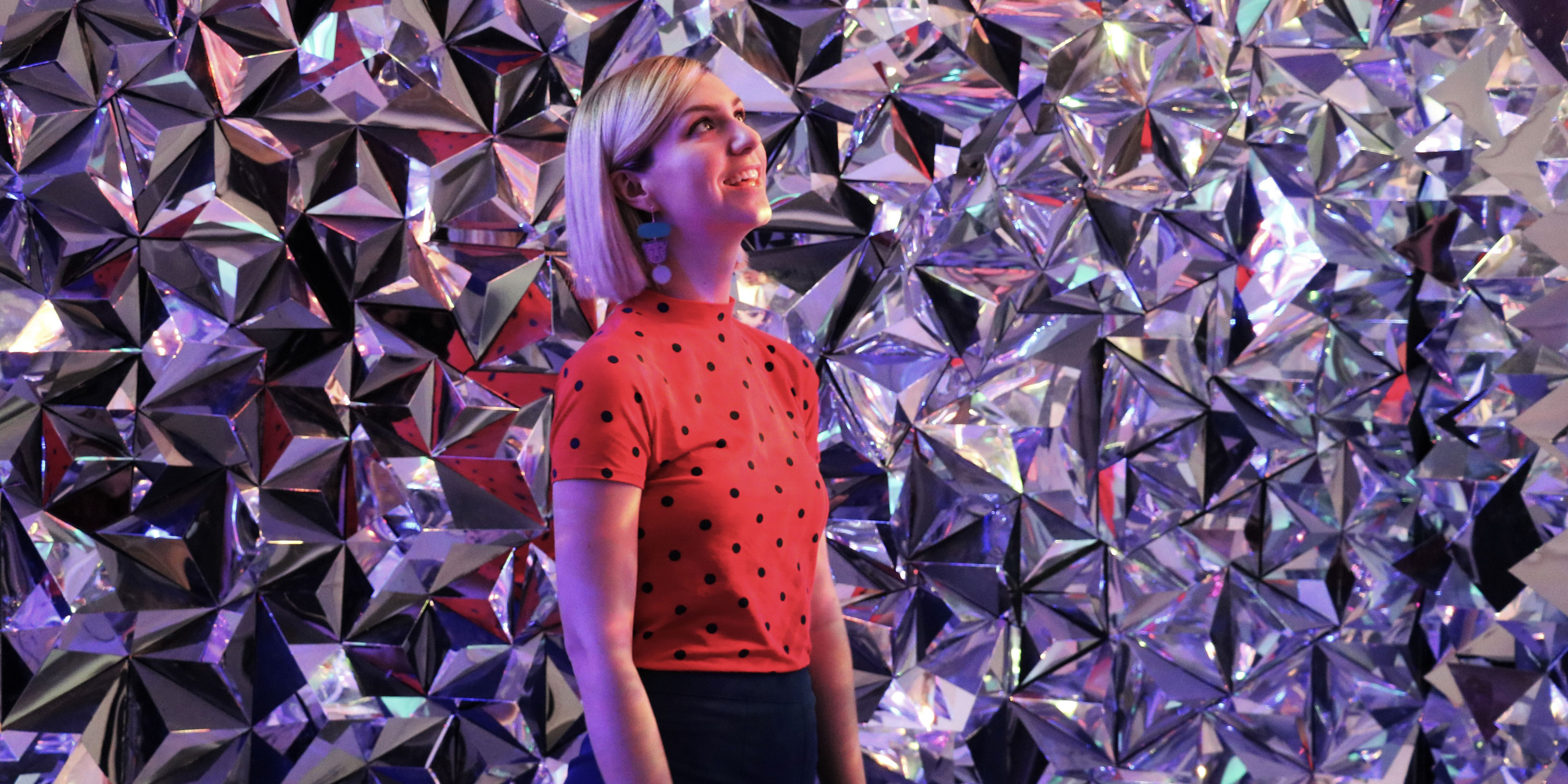
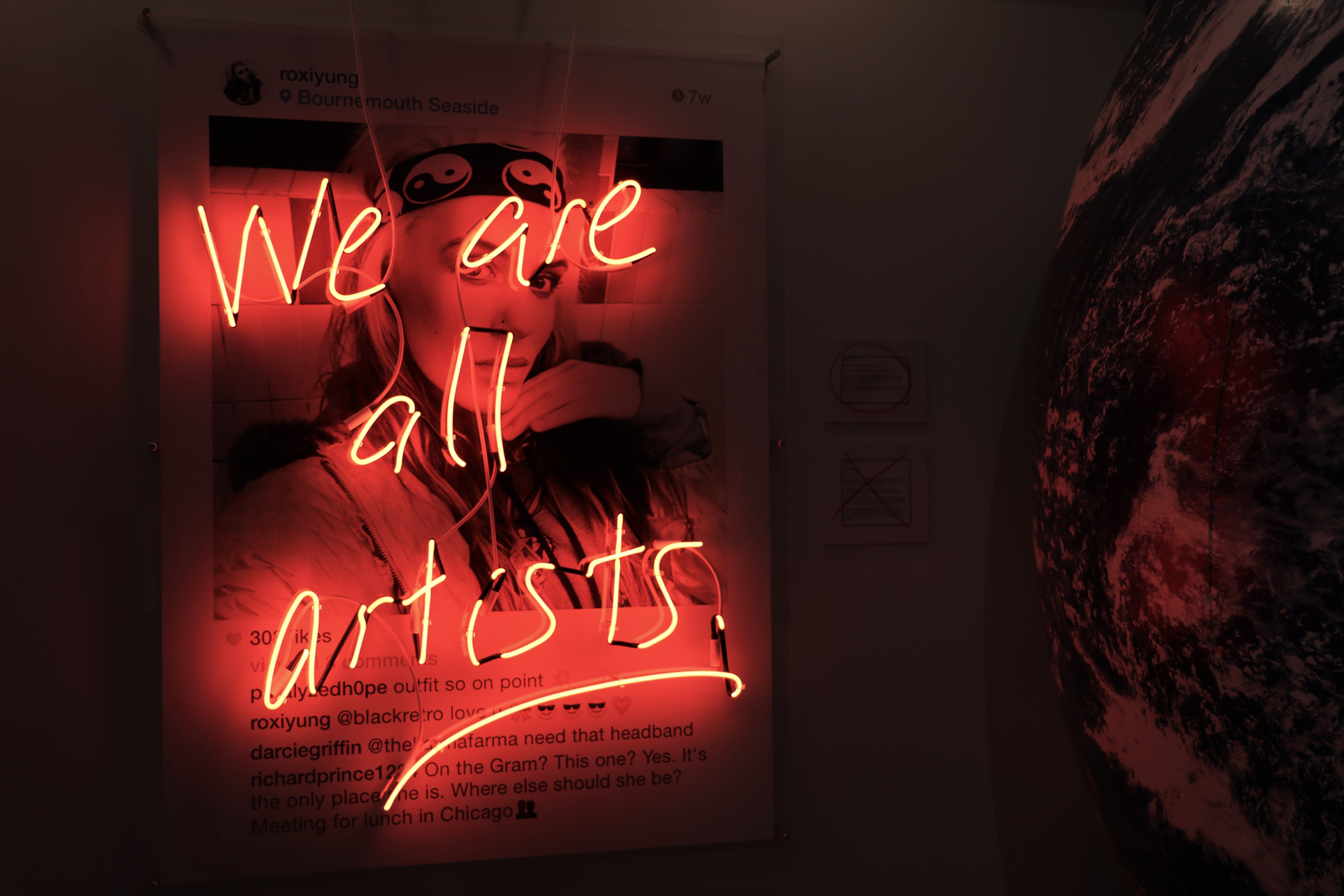
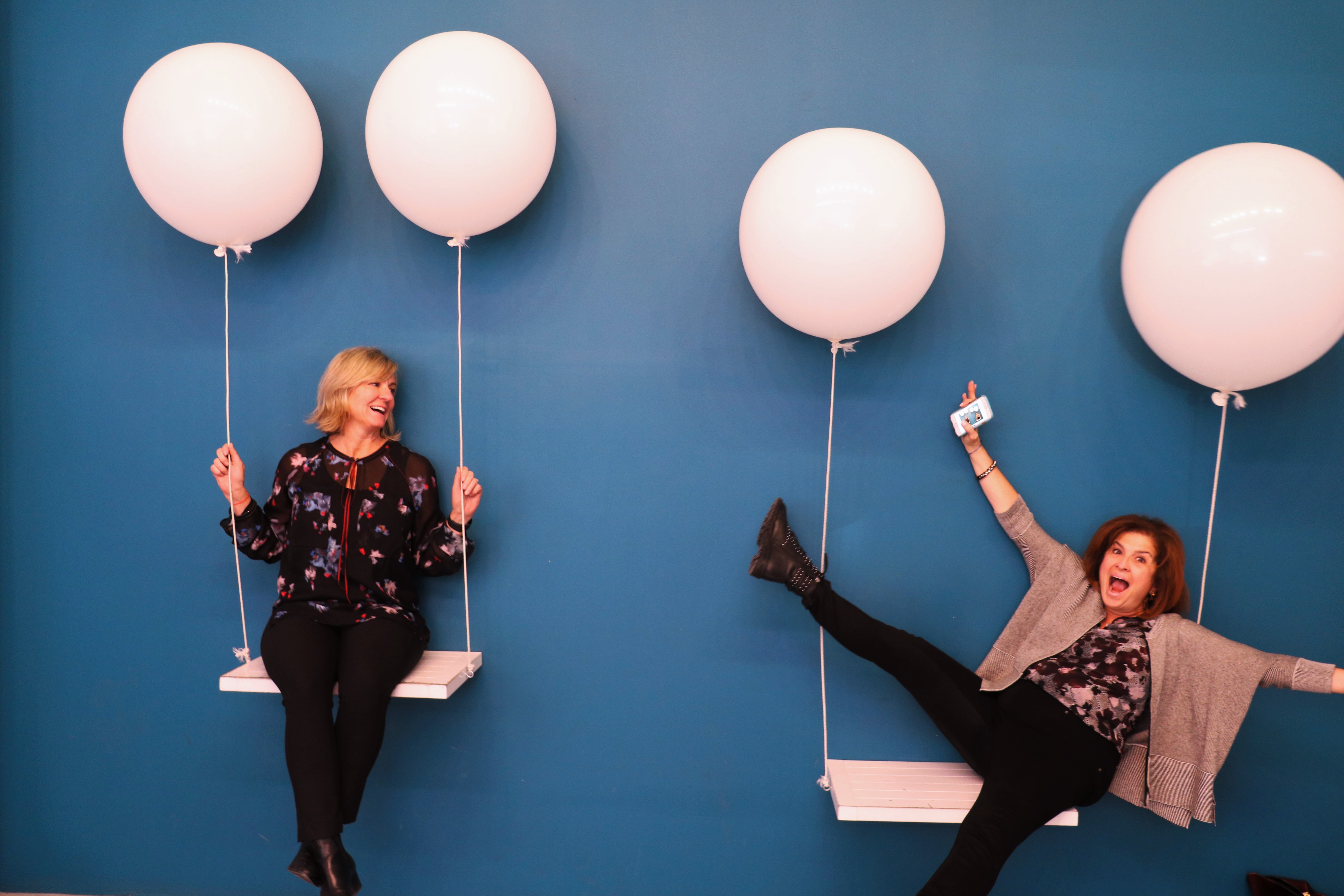
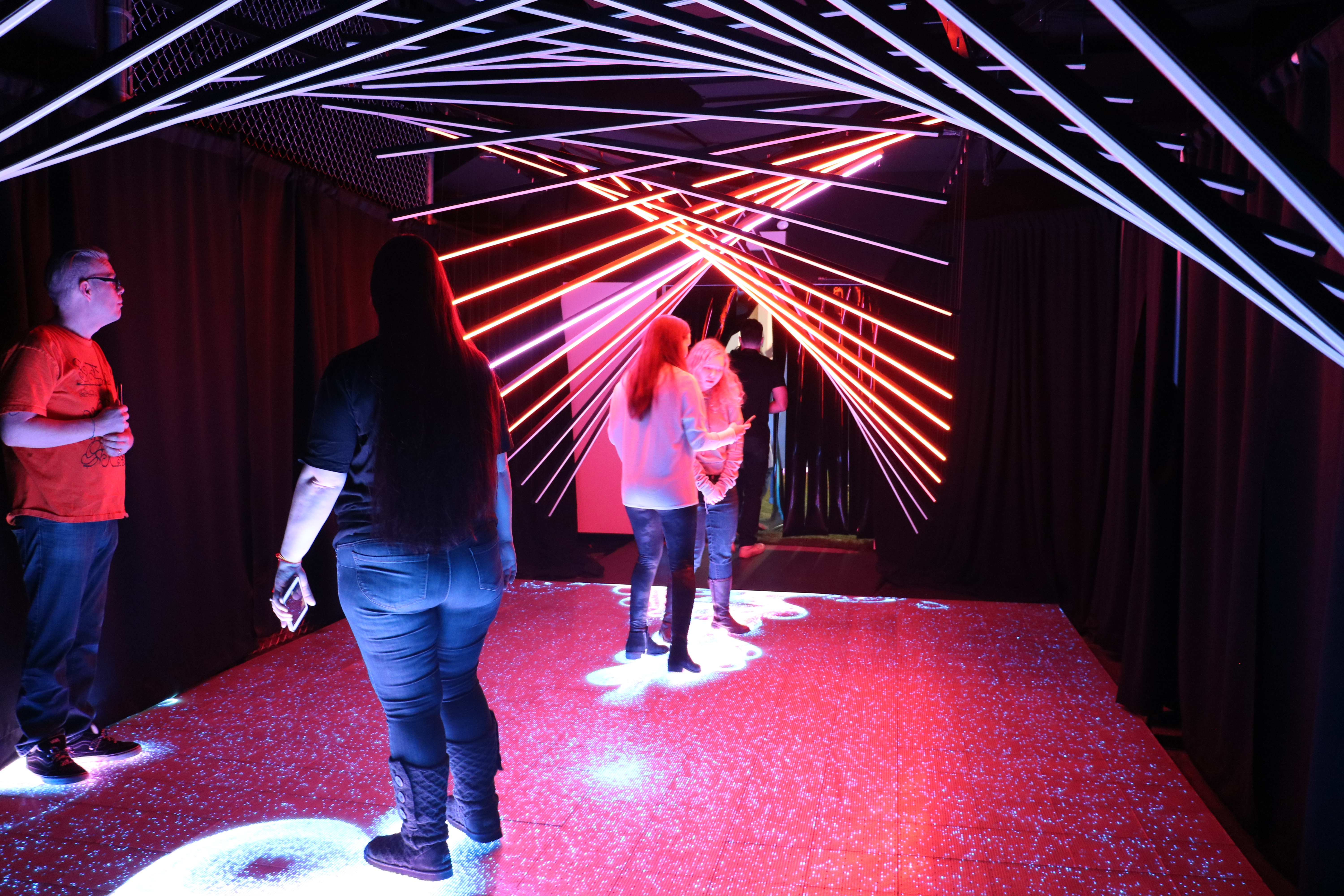
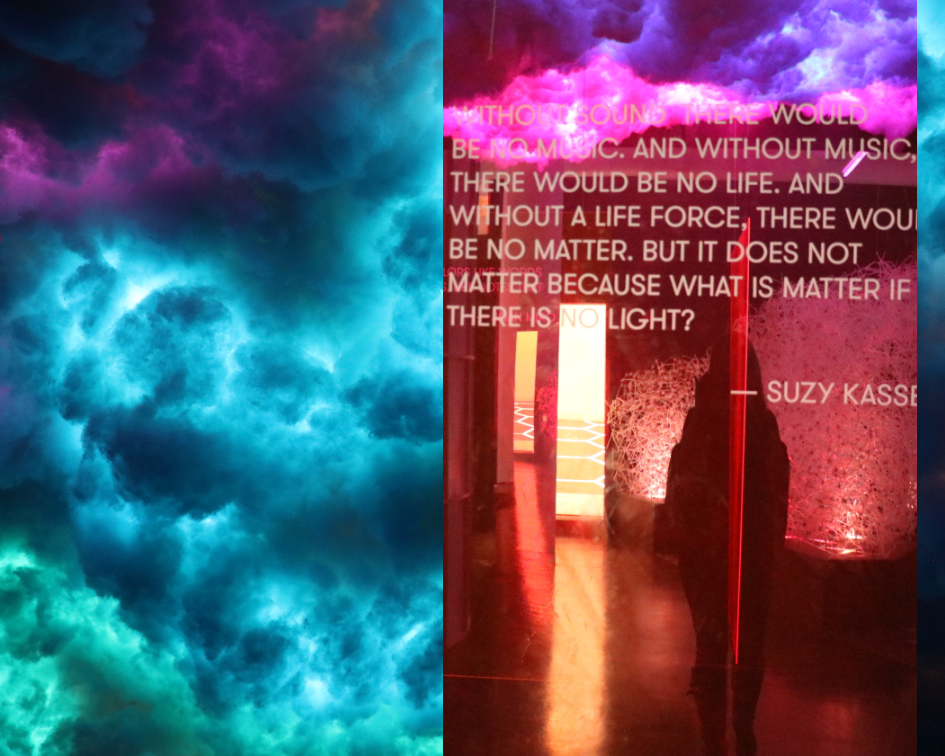
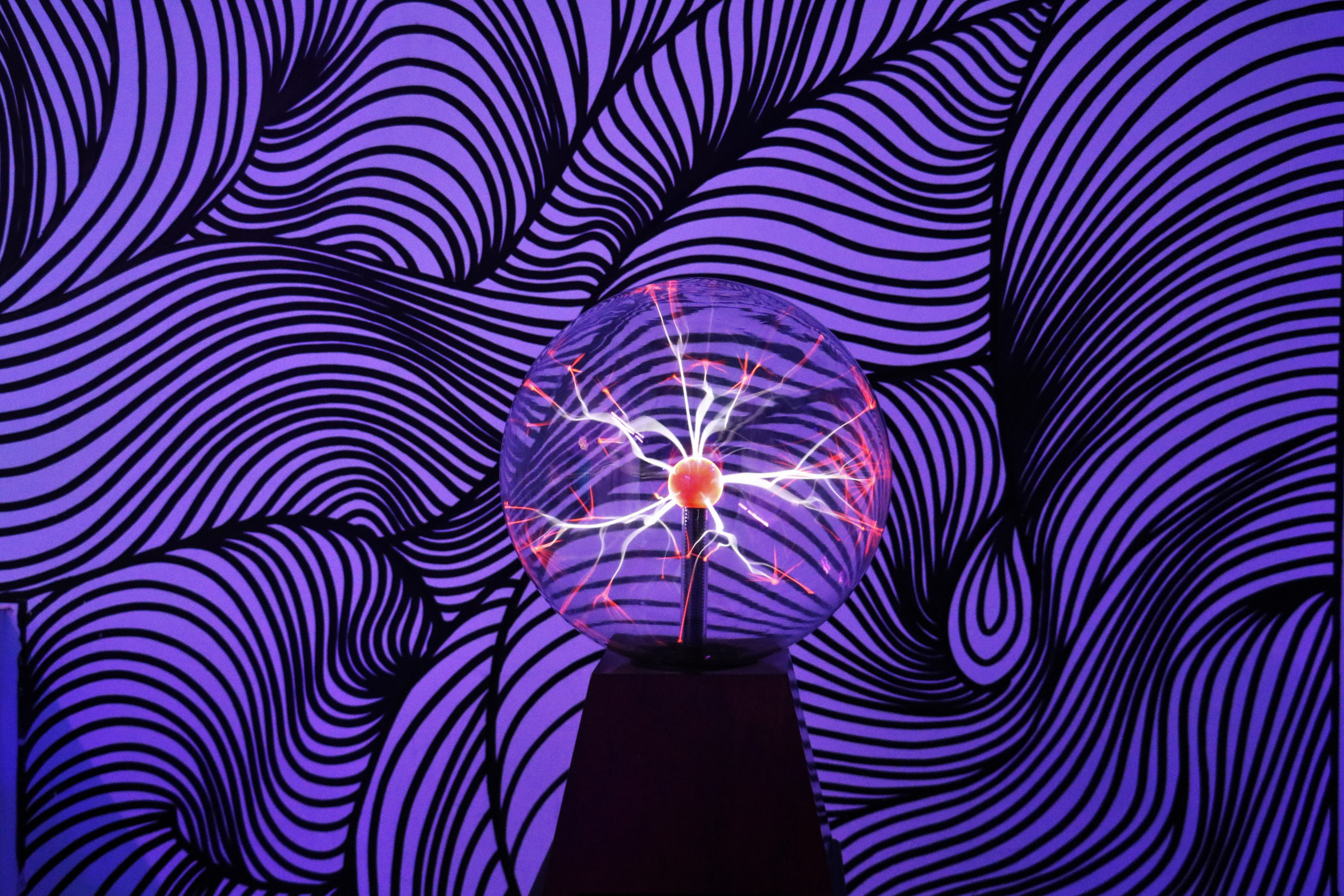
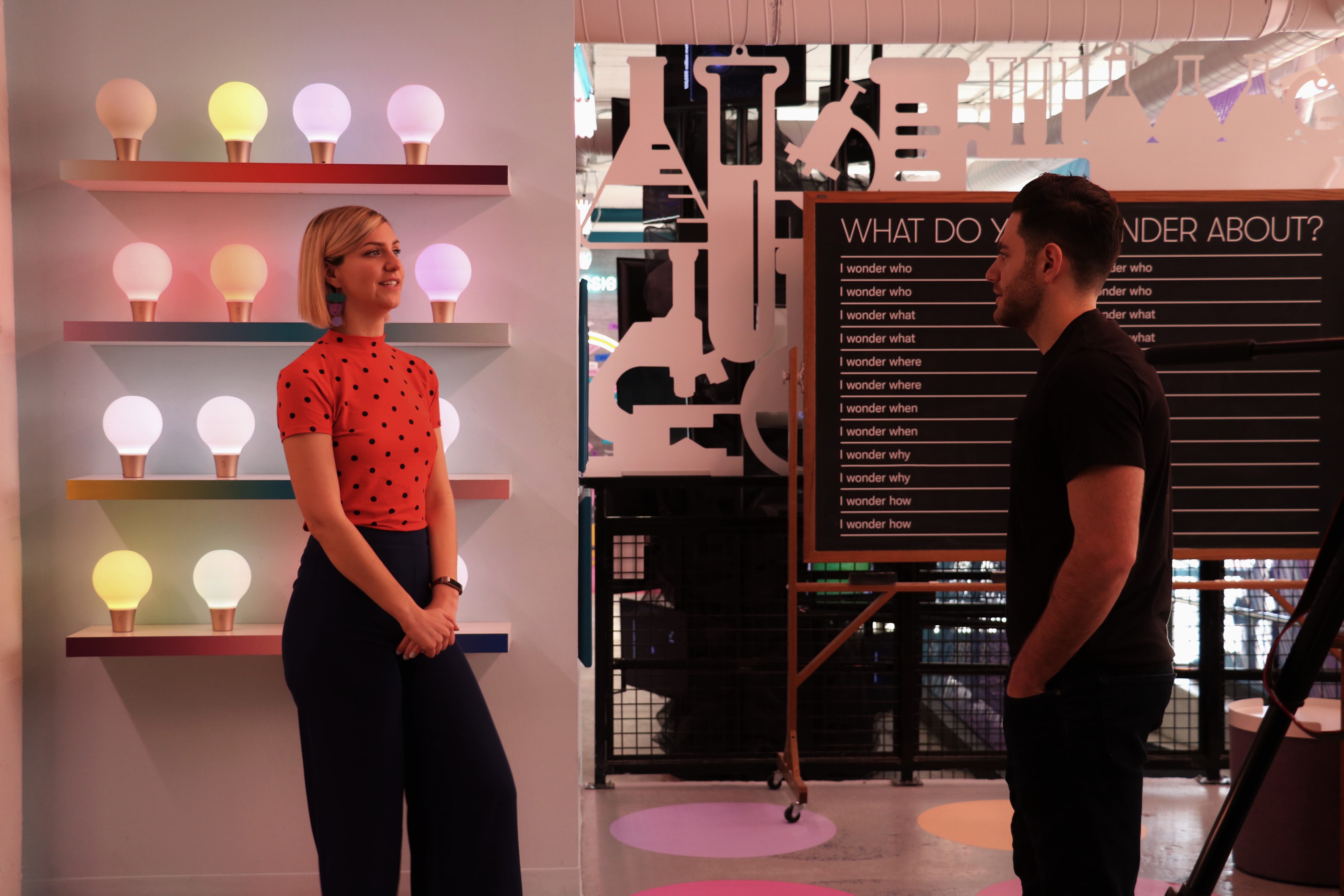
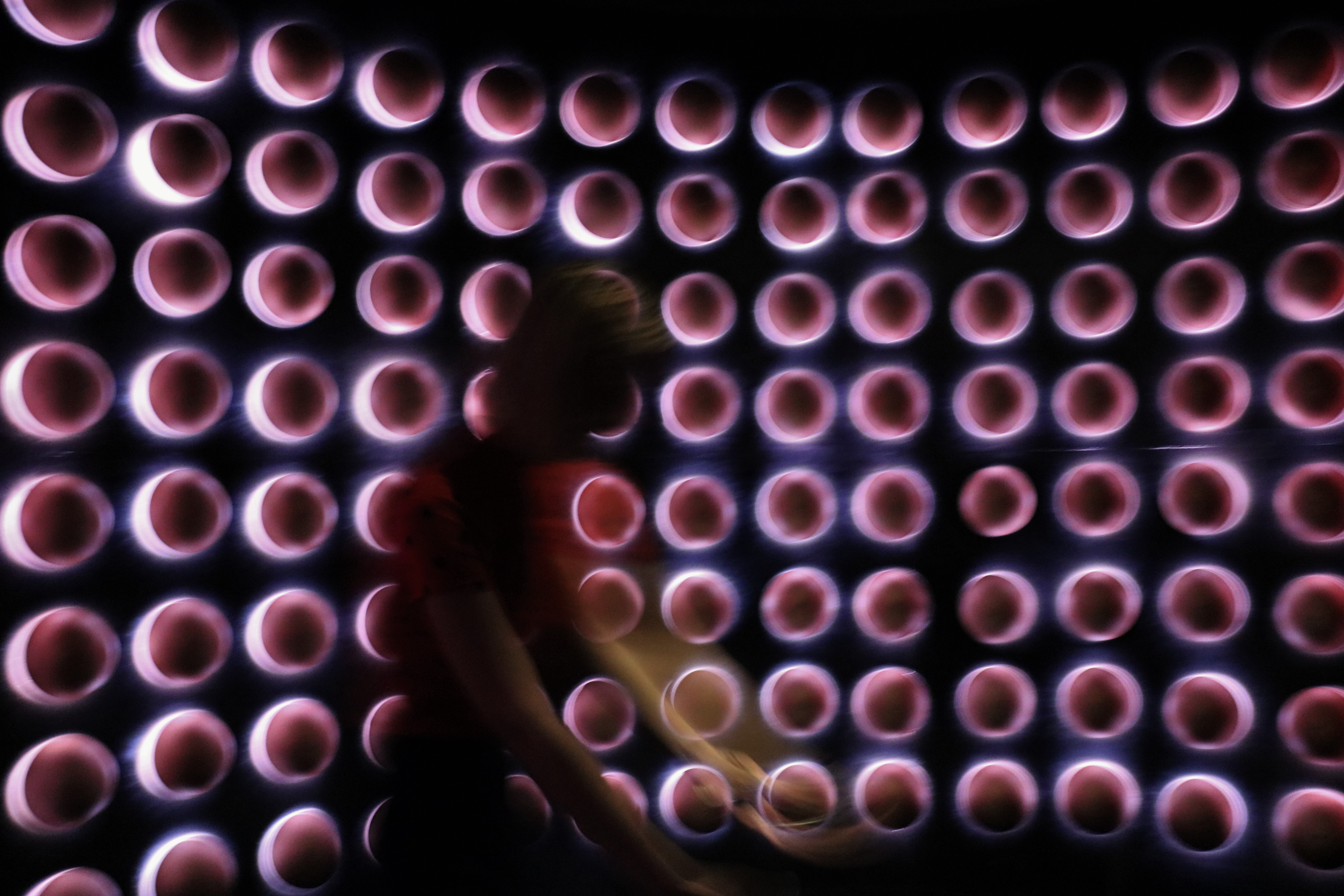
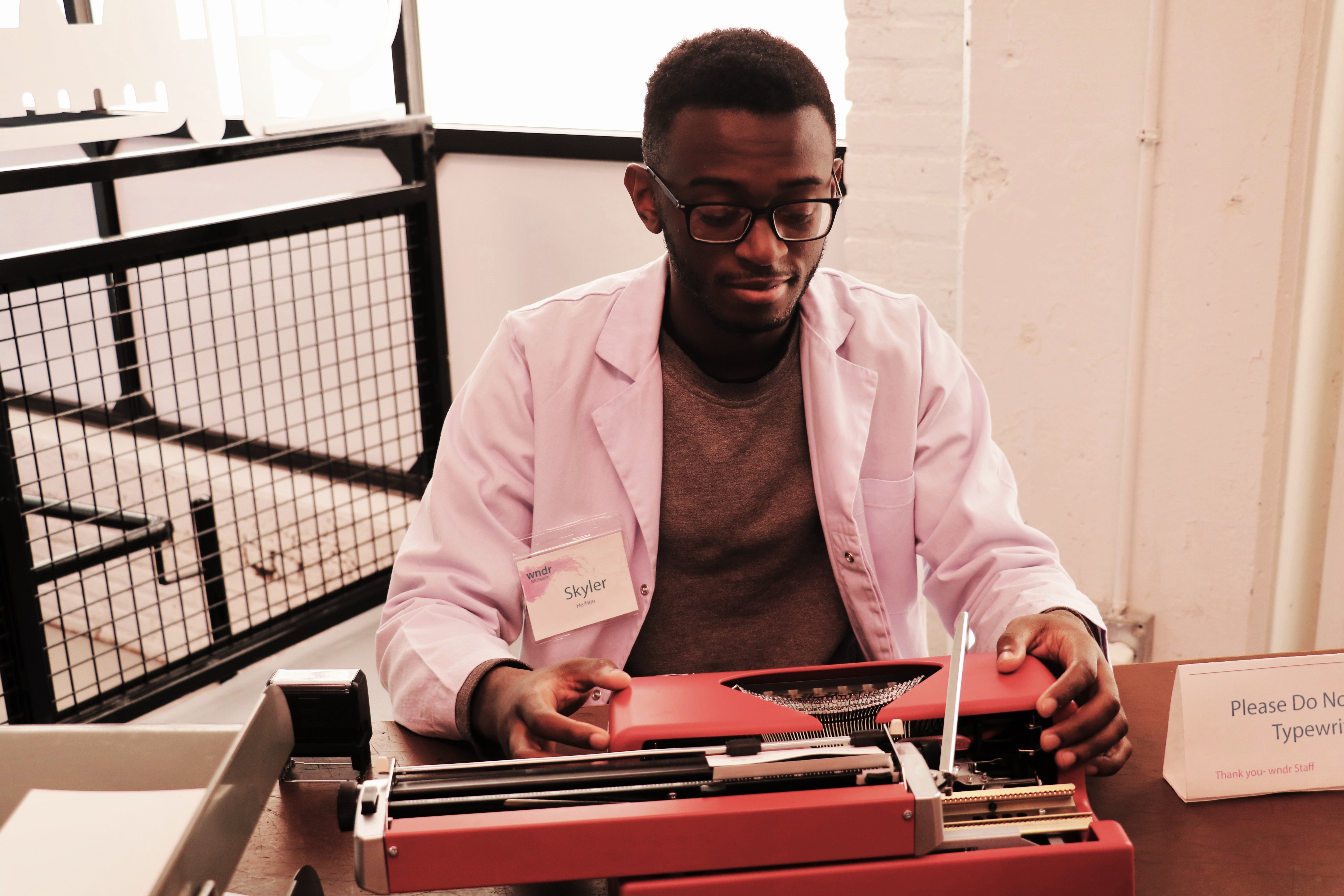
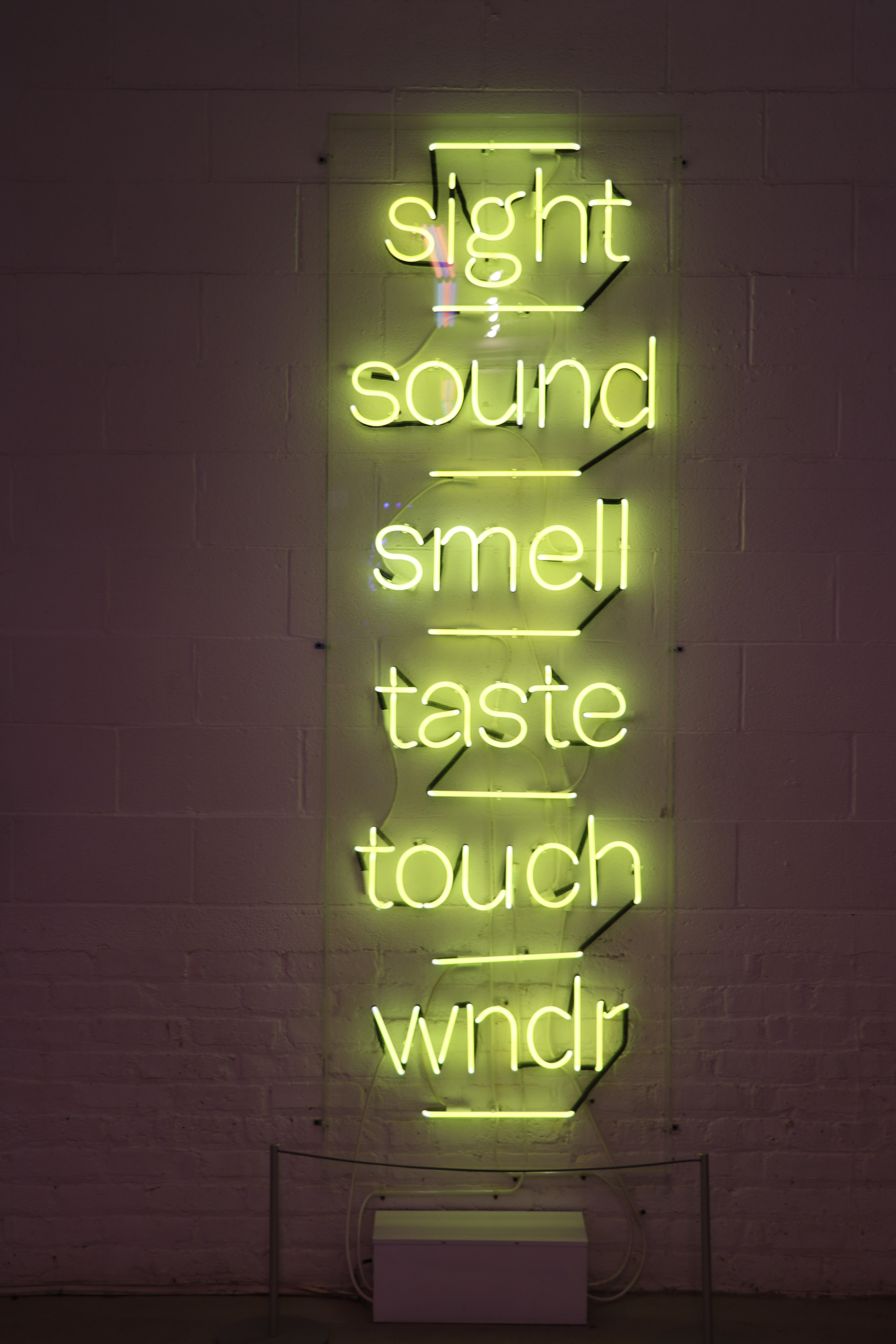
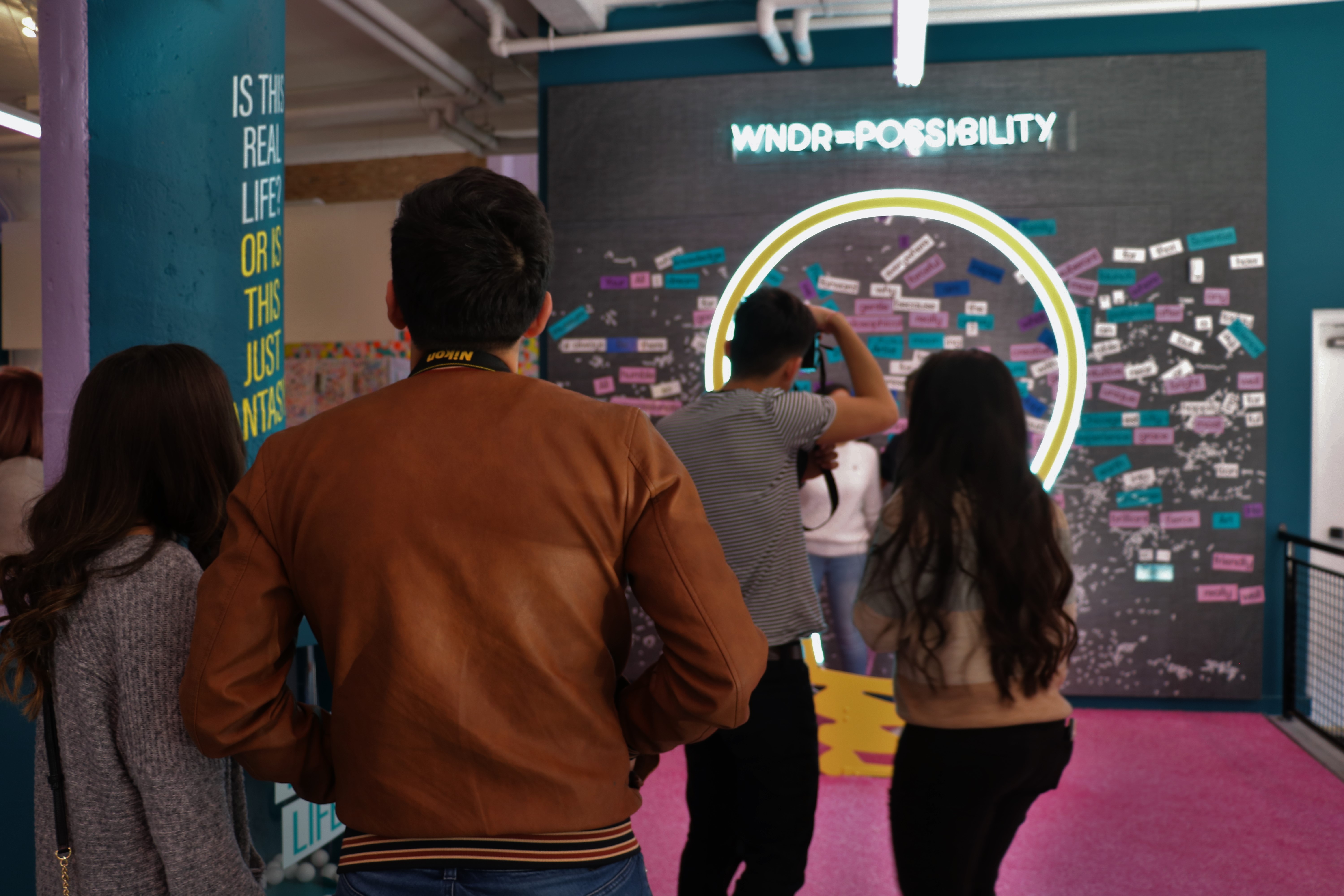
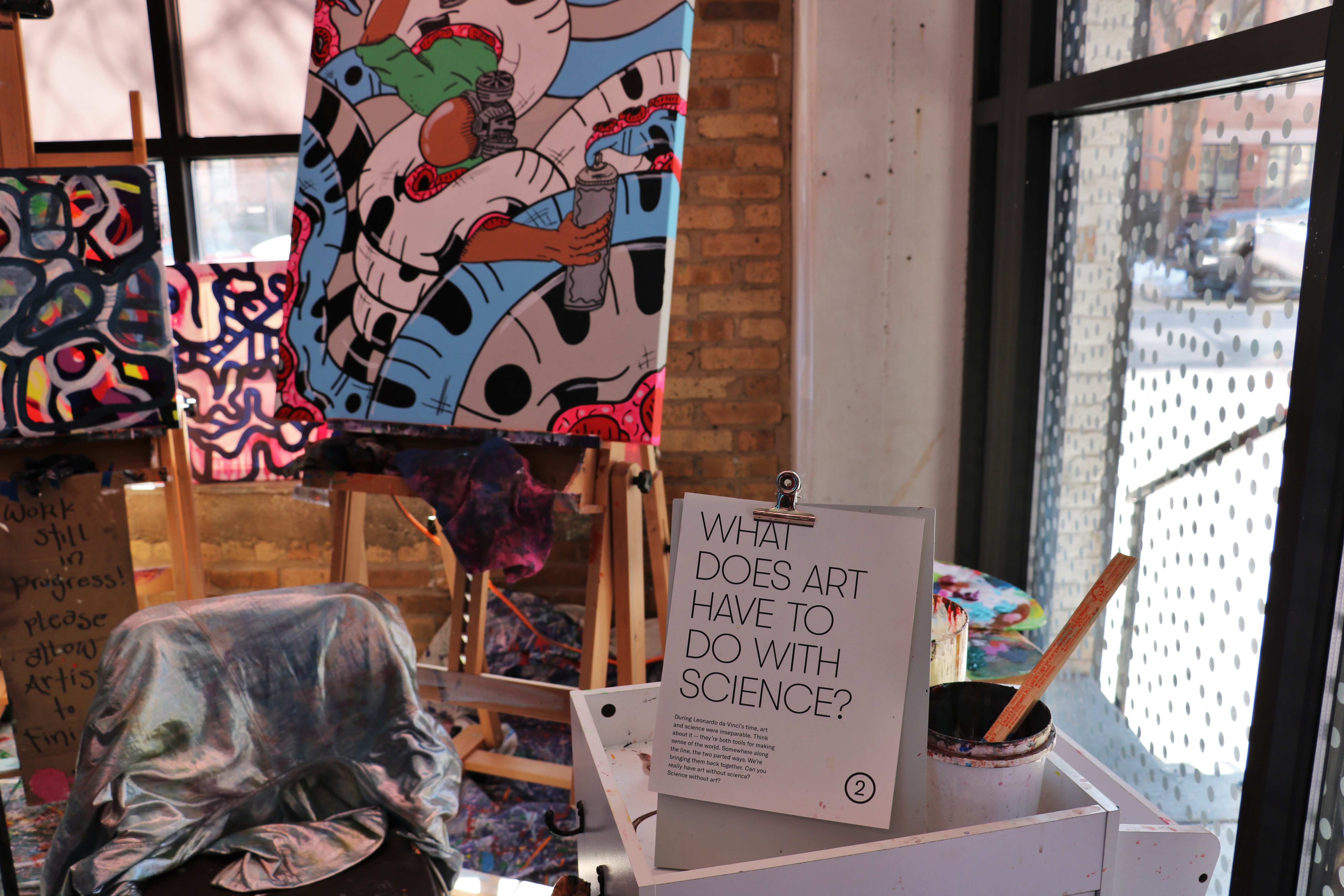
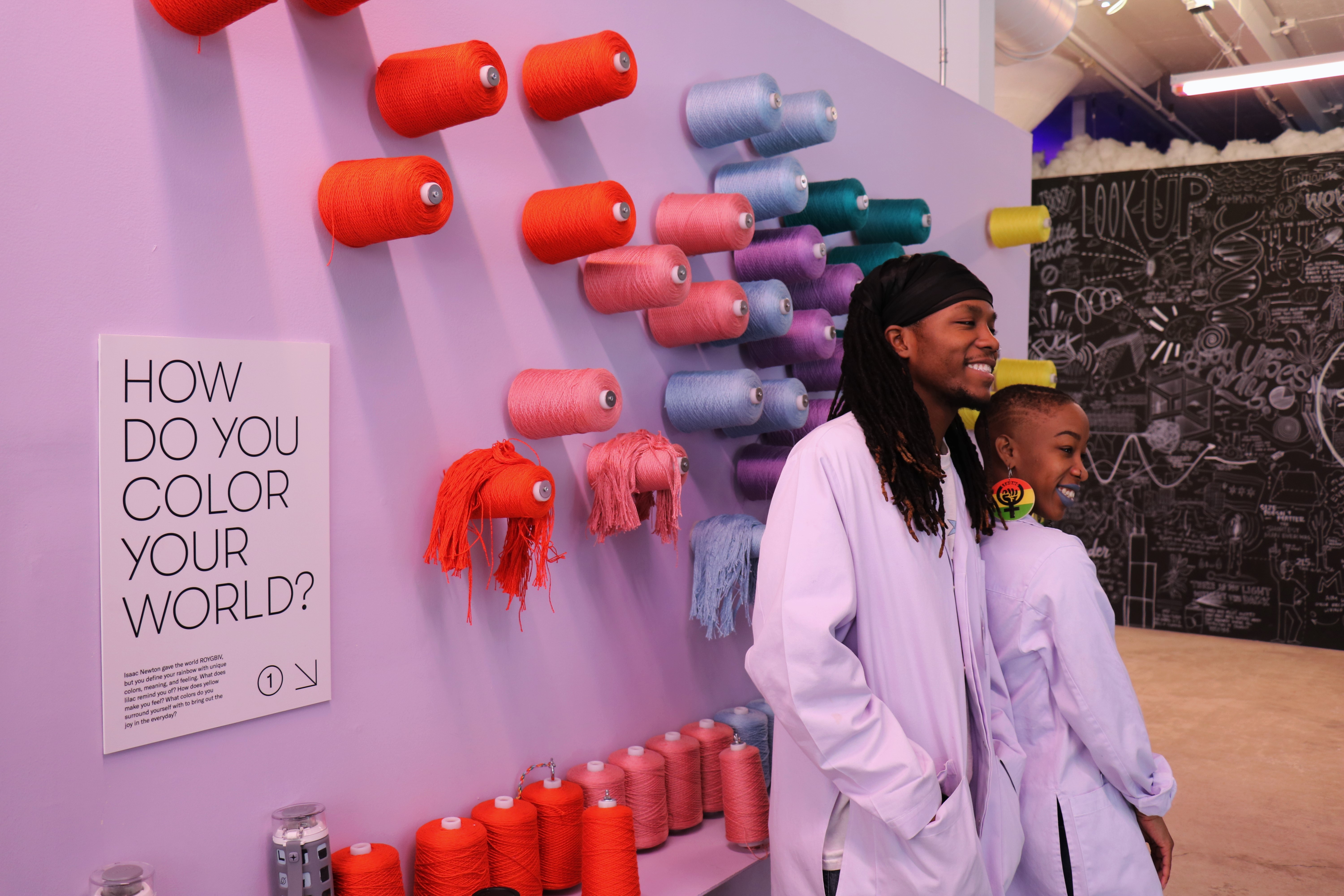
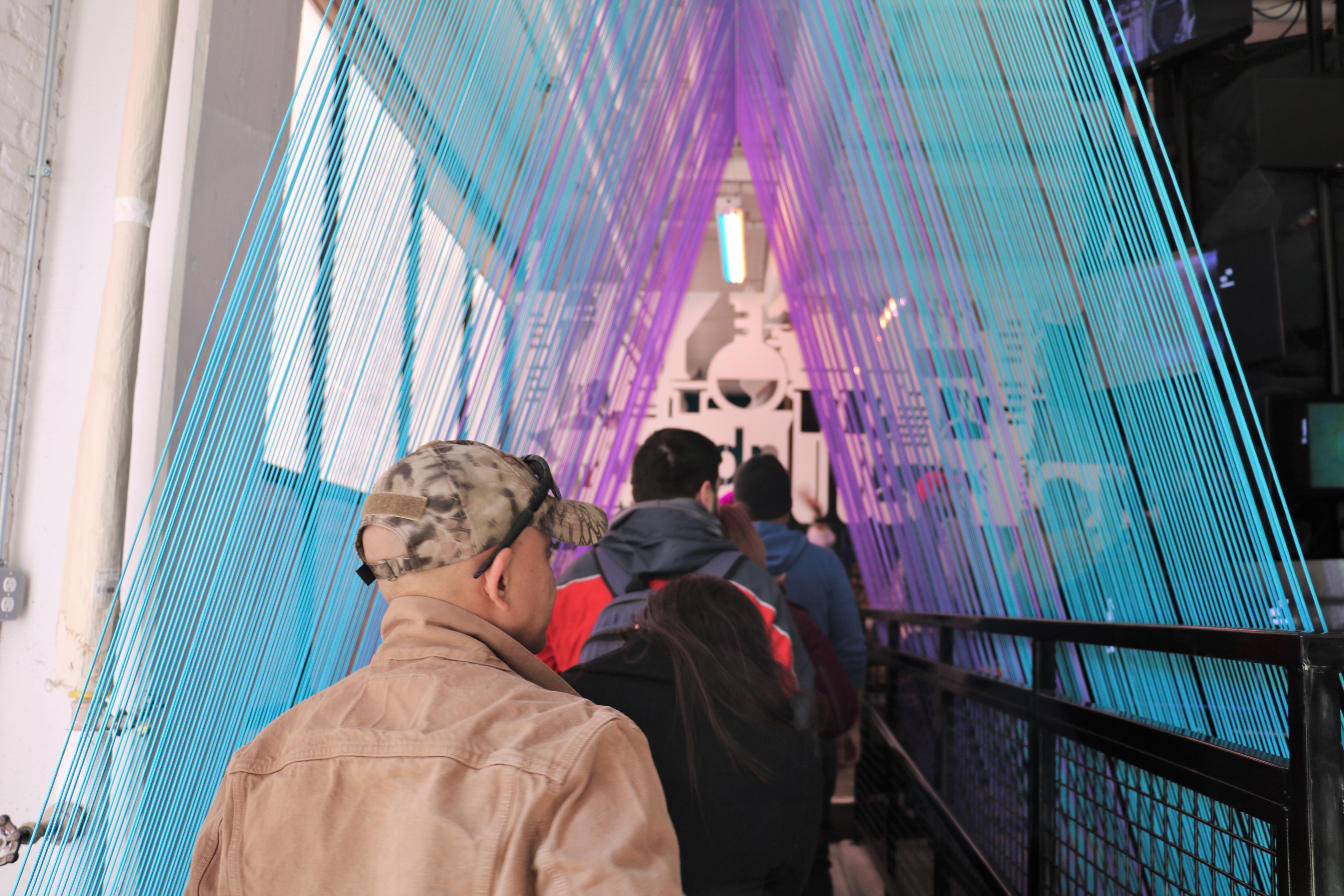

NO COMMENT